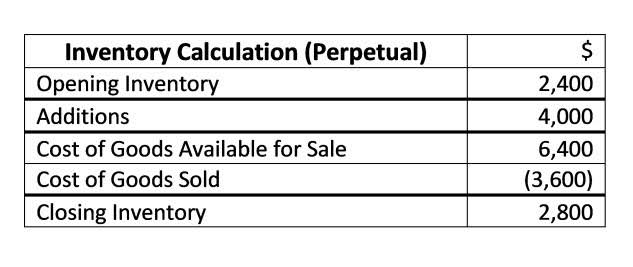Content

He, like a broker-dealer, had suppliers (i.e., the people in the market who sold him securities) and customers . The court noted that while Archarya’s theory may have had some economic merit, it was not relevant for legal analysis, and the court rejected the argument. Interestingly, the Tax Court rejected the government’s proposal to add a negligence penalty, observing that Archarya had approached the matter as an economist would mark to market accounting rather than as the Code requires. The due date for this election is the extended due date of the tax return. The taxpayer must file a copy with the National Office no later than he or she files the tax return. Moreover, all these expenses are deductions for adjusted gross income on Schedule C . This approach avoids not only the limitations imposed on miscellaneous itemized deductions but also the deduction cutback rule of Sec. 68.
- The factor upon which many cases are decided concerns the frequency, extent, and regularity of the taxpayer’s trading.
- When compared to historical cost accounting, mark to market can present a more accurate representation of the value of the assets held by that company or institution.
- He teaches a popular bi-weekly webinar, Tax Tuesday, where business owners and investors can ask any tax question and get answers LIVE on-air.
- Hence, ‘fair’ value approach is adopted when measuring these accounts .
- Many banks were forced out of business after they devalued their assets.
Mark-to-market accounting is not as static or predictable as historical cost accounting based on original value and asset depreciation. It seeks to reflect the fluctuating fair value of an asset for accounting purposes so that a business or company can get an accurate picture of asset value or the value it could obtain from liquidating assets. In contrast to fluctuating accounting models is historical cost accounting, where a fixed asset is recorded on a balance sheet in terms of its original cost. These types of assets typically include company land or equipment that has depreciated over the course of its useful life, including assets such as buildings and machinery. Mark to market may provide investors with more accurate information about the current value of the assets a company owns because it is based on the amount a company might obtain for the asset in current market conditions. When the mark-to-market accounting method is used, the value of an asset is adjusted to show its value based on current market conditions.
Resolve an issue
The MTM election is fairly straightforward, especially when an example of a timely election is provided. The election must be made by the due date of the tax return for the year prior to the year in which the election is to be effective. To be effective for 2018, the election had to have been made by April 15, 2017. To make the election for 2019, select election 43 in the Election No. field in Screen Elect, located in the General folder. In general.–The amendments made by subsection shall apply to taxable years ending after the date of the enactment of this Act.
- The default-risk process involves the probability that an asset isn’t worth the original value.
- They listed the original prices of real estate they bought and updated prices only when they sold the assets.
- Mark to market aims to provide a realistic appraisal of an institution’s or company’s current financial situation based on current market conditions.
- On its face, this might suggest that the taxpayer was in a trade or business and could deduct his security losses as ordinary losses.
- Is the accumulation of all adjustments arising from a particular change in accounting method in order that items of income or expense are not omitted or duplicated.
- Tax Section membership will help you stay up to date and make your practice more efficient.
Those interests are prejudiced if granting relief will lower the taxpayer’s tax liability or if the election affects a year closed by the statute of limitation. No matter how Iarge the estate or how continuous or extended the work required may be, such facts are not sufficient as a matter of law to permit the courts to . The crucial words in the definition are “to customers.” Congress specifically added this phrase and the word “ordinary” to the definition of capital assets as part of the Revenue Act of 1934.
File
In addition, investors do not make their money through commissions like dealers but derive it from the price movement of the securities as well as dividends and interest. Above all, unlike dealers, investors do not have customers but buy and sell on their own behalf.
What is marked to market with example?
Description: Mark-to-market is a tool that can change the value on either side of a balance sheet, depending on the conditions of the market. For example, stocks that an individual holds in his/her demat account are marked to market every day.
The courts often combine this factor with the taxpayer’s investment intent. 24 If the primary source of income is long-term gains, dividends, or interest, this tends to confirm that the taxpayer is an investor and not a trader who tries to profit from the daily ups and downs of the market. Historically, Sec. 475 has defined a “dealer in securities” as a taxpayer who regularly purchases securities from or sells securities to customers in the ordinary course of a trade or business. In this regard, the securities owned by a dealer represent inventory held primarily for resale. Congress expanded this original definition to include those who regularly offer to enter into, assume, offset, assign, or otherwise terminate positions in securities with customers in the ordinary course of a trade or business. 5 These changes extended the historical definition significantly by including those who offer or hold themselves out to terminate security positions. The examples in the regulations indicate that this covers more exotic securities such as interest rate swaps and foreign currency transactions, 6situations in which things are not bought and sold but contracts are entered into.
What is MTM profit?
The IRS seems to accept the courts’ method of distinguishing dealers from traders and investors. 97-39, 10 the IRS provided instructions on how to make the mark-to-market election, using a question and answer format (i.e., issues and holdings). Issue 3 asks, “If a taxpayer’s sole business consists of trading in securities , is the taxpayer a dealer in securities within the meaning of section 475? Ln Arberg, Melissa Quinn opened a brokerage account with E-trade in 1998.
Form FWP BANK OF MONTREAL /CAN/ Filed by: BANK OF … – StreetInsider.com
Form FWP BANK OF MONTREAL /CAN/ Filed by: BANK OF ….
Posted: Thu, 15 Dec 2022 16:33:14 GMT [source]
I.R.C. §475 allows traders in securities or commodities, as well as dealers in commodities, to elect to mark-to-market their securities or commodities to market annually. Traditionally, gains and losses are deferred until disposition, but the mark-to-market provisions of I.R.C. §475 require income recognition without realization. Such amended return must be filed on or before March 31, 1996, in accordance with the rules specified in this notice. In addition, all returns filed for later years must be amended to conform with such California tax election, including the IRC § 481 income adjustment attributed to the change in accounting methods, and filed with FTB on or before March 31, 1996. Incidentally, a taxpayer who scores the much-coveted trader tax status from the IRS can also enjoy other benefits at the end of the tax year, such as a wash sale, something that is normally prohibited for tax purposes.
TTS traders consider a Section 475 election for tax-loss insurance and a QBI deduction.
More specifically, if a commodity is hedged, it may be transformed into a security; conversely, if a security is hedged, it may be transformed into a commodity. Making a mark-to-market election has many benefits and a few pitfalls.

